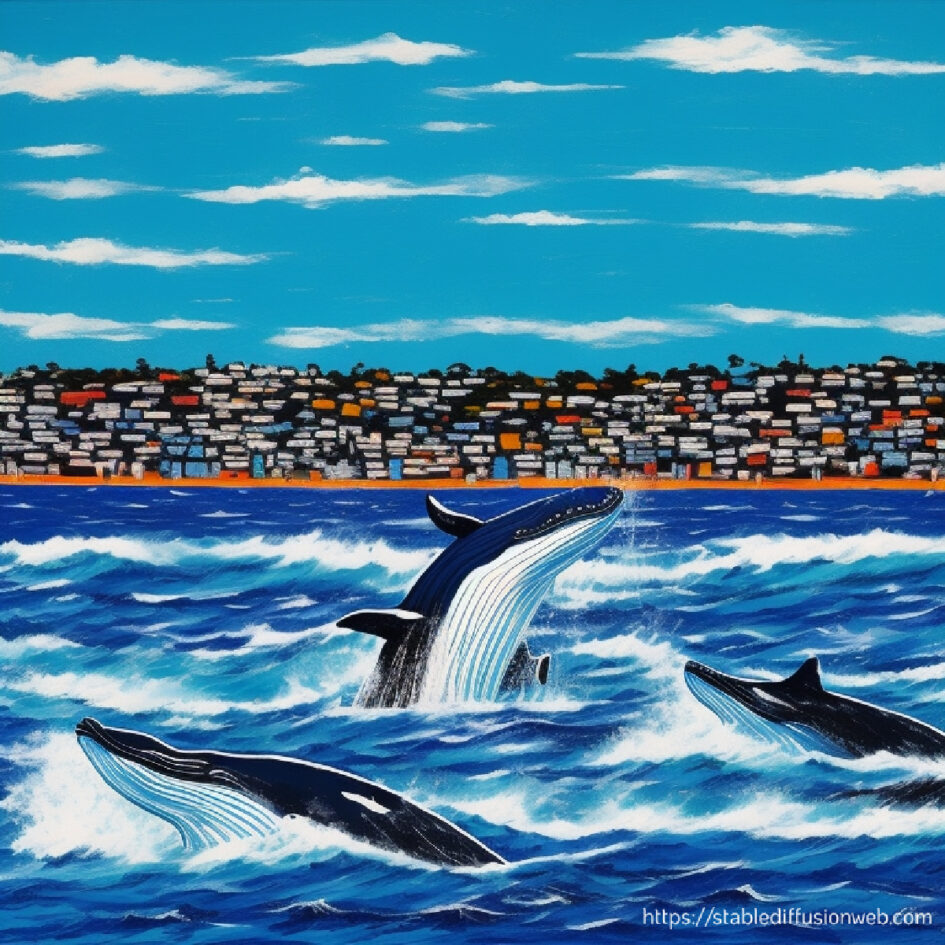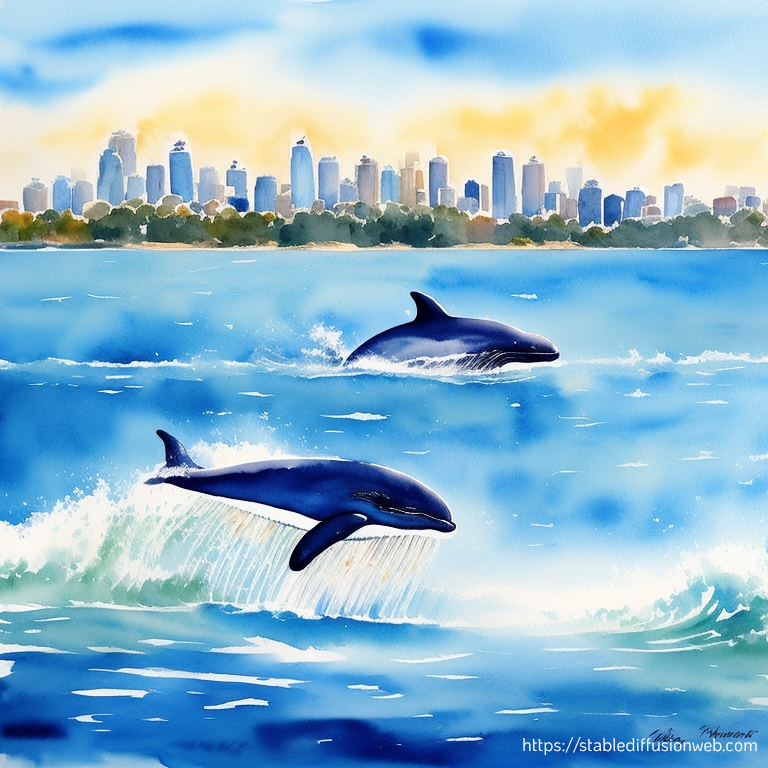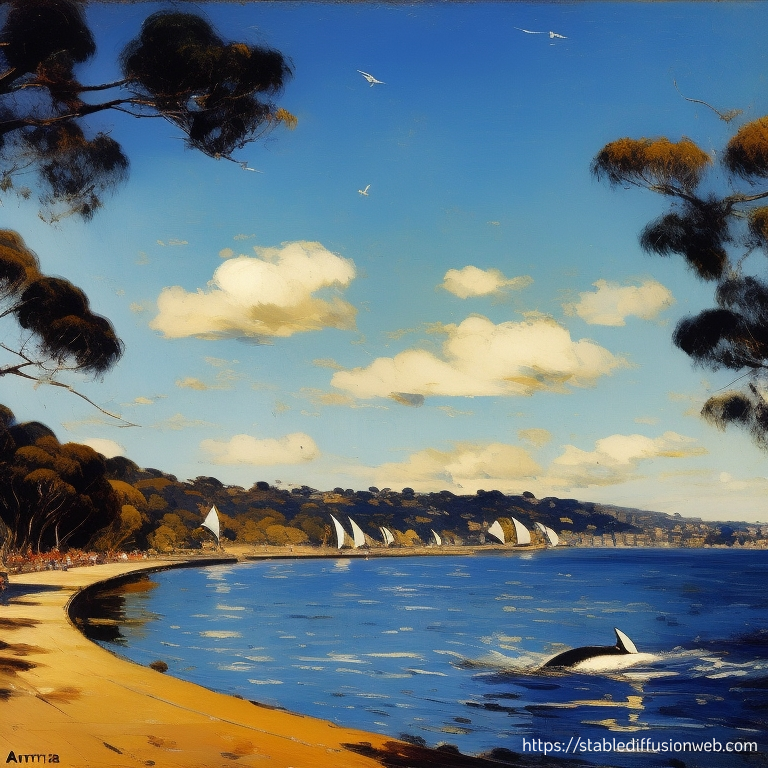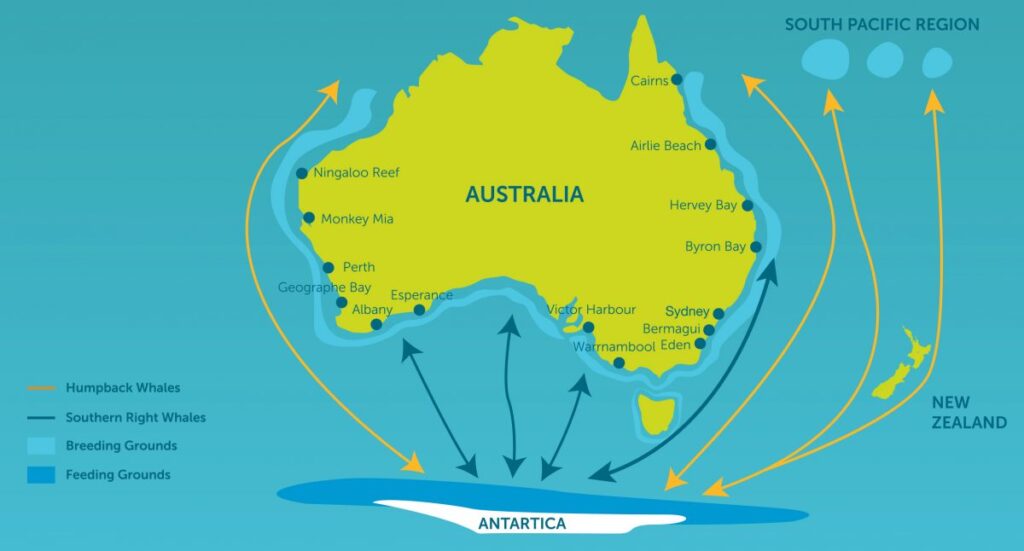By John Stapleton
There’s one thing the Australia’s left wing Labor government is good at, and that’s spectacular own goals.
Their much spruiked climate change policies and rush to “Net Zero” involves the building of massive , diabolically expensive and environmentally ruinous windfarms which are meeting community opposition wherever they’re built.
This week alone the Albanese government has managed to alienate thousands of people on the south coast of New South Wales, stretching from Bulli just north of Wollongong to Gerringong south of Kiama. People went to their so-called “Community drop-in sessions” expecting townhall style meetings where they could voice their concern.
They got nothing of the kind, instead attending sessions, evolved from an American method of limiting public opposition, where the government gets its way by ignoring all opposition to whatever initiative they are pushing.
The government is inflicting all this damage on the country not because they actually believe the United Nation’s ideological garbage on climate change but because they are beholden to massive contracts with the likes of Bill Gates and the Chinese manufacturers of windfarms, both of whom will profit enormously from this environmental lunacy. The Big End of Town discovered they could make billions out of climate change. And so here we are.
I attended the session at Shellharbour, a picturesque area south of Wollongong. A Sense of Place Magazine will be publishing more on the Australia wide backlash in the coming days. Here are my initial impressions.
The general public on the south coast of New South Wales, the many people who will be affected by the government’s industrial transformation of this visually beautiful area, fully expected to be consulted about the introduction of windfarms off the coast and the destruction of the much beloved whale migration route.
Instead their so called “community drop in sessions” were nothing of the kind. It was just another bureaucratic snow job, where useless apparatchiks answered questions from their song sheet, or talking points, while others, not officially designated, mingled in an attempt to defuse the anger of the mob.
That is, the uninformed, ordinary people who are not climate zealots and who this government treats with such staggering contempt.
Stories of dead whales are popping up all around the world, wherever there are windfarms.
“Those stories were sponsored by oil companies,” the female bureaucrat with cold, scheming eyes told me. “Would you rather have the government running these things, or an oil company?”
“Nobody likes this government,” I snapped.
That was true enough.
What I should have said was that all these billions of dollars being raked off the back of working Australians are flowing to the Chinese and to the likes of Bill Gates and his World Economic Forum acolytes, and round about now people would trust a petroleum company over any of them.
They can all fly off to Davos once a year in their private jets, but it is the commoners who are paying.
The bureaucrats claim that the stories of the destruction of wildlife and local environments were sponsored by oil companies is yet more gaslighting. The visceral response, seen in Facebook pages featuring the community response up and down the East Coast, are driven by outrage.
And even if the dodgy claim was true, at least petroleum companies are open and honest about being out there to make a profit, and have facilitated easy modes of transport for ordinary people for more than a century.
At least they don’t fill the airwaves with ideological bullshit; at least they haven’t energised a generation on a lie. At least they don’t rape the poor to give to the rich, while impoverishing them in the name of saving the planet.
The lie. The lie. The lie.
All those who had showed up for the so-called consultation had been expecting a town hall meeting, somewhere they could express their concerns, feel like they were having a say, feel like they were being listened to.
Nothing of the kind occurred. There was no opportunity for people to express their views. They were handed a couple of brochures and informed of what the government was intending to do.
“You’ve already made up your minds,” I told one of the bureaucrats, who was under orders not to speak to the media. “You don’t want to know what these people think.”
“They can scan the QR code over there,” she replied. “It will take them to the site where they can make a submission.”
“This area’s full of tradies and retirees,” I replied. “They don’t have the capacity or are not inclined to do that.”
“Well people pay their bills online, that’s the way of the world now,” said the Canberra public servant.
That was it. The absolute contempt. These bureaucrats pretend to have a community consultation, all of this show paid for by the taxes of working people, and afterwards they would book into the best hotels in the area, go to nice restaurants in the evening, their handsome travel allowance paid for by people struggling to pay their electricity bills. And shrug off concerns over the death of wildlife, the destruction of amenities and the dramatic reduction in the value of coastal properties.
The bureaucrats have procured their multi-billion contracts. They have their orders from the minister, the Energy Minister Chris Bowen, most commonly described as a “lunatic”. Clayton Utz, the consultancy firm being paid to oversea the process and well known for their high fees, will pocket their dosh.
What could you do but sigh? Or despair? At this blatant arrogance, this indifference to the views of the public. What were a few outraged communities in face of multi-billion dollar corporations? And the likes of Bill Gates? A man who brazenly declared he was moving on from vaccines to climate change, who regards Australia’s rush to Renewables as a bonanza for investors, and who many Australians believe belongs in jail.
As for the country, anger mounts daily.
Pasted below is the original story on the government’s plan to destroy the wildlife and the amenities of the South Coast.
You can also read it here.
Australia’s Labor government, elected in 2022, is planning to destroy the country’s most beloved whale migration route by placing hundreds of wind turbines directly on its path.
Wind farms are notorious around the world for their destruction of whale habitats. Sound travels well in water, and the noise they generate causes them enormous distress.
Each winter tens of thousands of whales migrate up the East Coast of Australia from the Antarctic to their breeding grounds in the world heritage site the Great Barrier Reef.
The whales, which were hunted to near extinction in Australian waters during the the 19th and 20th Centuries, have been recovering dramatically in number since their killing was finally banned in Australia in 1978.
Their numbers are variously estimated to have sunk to as few as 250, and are now numbered as high as 60,000 in one of the most dramatic population recoveries of any species seen anywhere in the natural world.
The humpback whales 5,000 kilometre migration route is also touted as one of the longest mammal migration route to be found anywhere on the planet.
Whales are believed to have been embarking on this migration route long before humans set foot on the continent. Whales evolved from land mammals that lived in warm salty waters about 55 million years ago. Their migration route is believed to have evolved to such a length as the animals became separated from their seasonal food source.
Sadly, their fate is being sacrificed on the altar of renewables, and Australia’s whales are about to face extinction once again.

Image courtesy of NSW National Parks.
As with everything to do with climate change, billions of dollars are in play, and the Australian government is showing no signs of responding to public outrage.
These majestic, ancient, highly intelligent animals, the subject of myth and legend across multiple human cultures, provoke both deep affection and awe in the Australian public. The migration is now in full swing off the coast of New South Wales, with enthusiastic photographers and nature lovers perched on headlands along the coast. An estimated 1.6 million Australians take to the shores each year to catch a glimpse of the whales.
Whales are uniquely sensitive to sonar, and to the impact of human sounds.
Numerous studies, including by the US military, have found that whale beaching can be directly connected to human noise, be it from ships, submarines or recreational craft.
One thing everyone knows about wind turbines, not only are they just plain ugly, they create a lot of noise. This noise travels through water. Farmers have been complaining about the unpleasant health consequences of their “thrumming” sound for many years, complaints invariably ignored by the authorities.
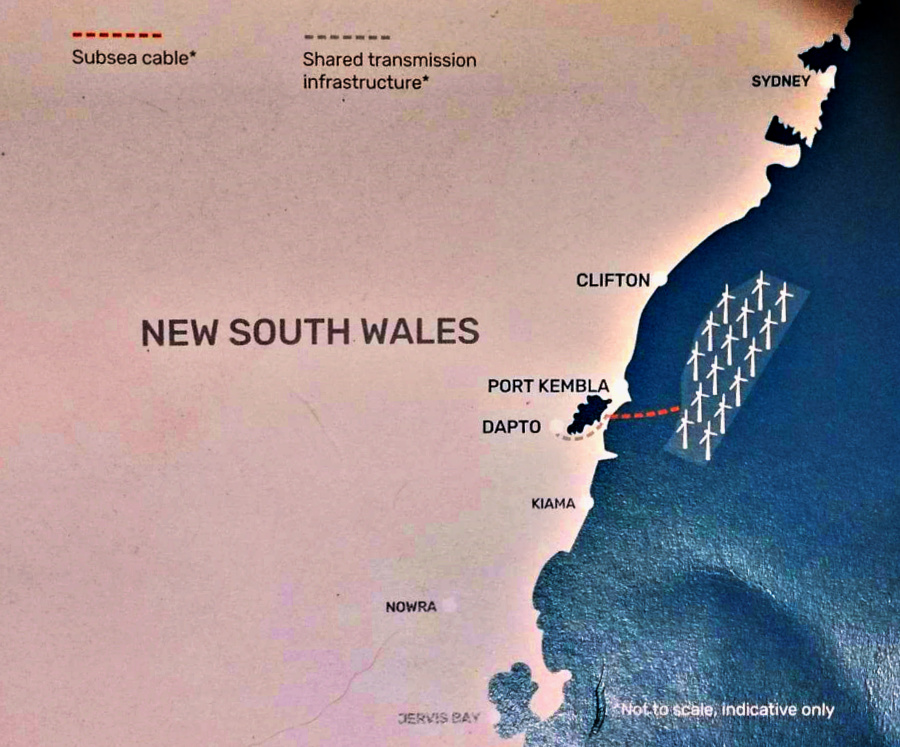
This map is courtesy of BlueFloat Energy, an international company vying for business with the Australian government. It is headquartered in Madrid with Americans as their major shareholders and has an annual revenue in excess of $11 billion.
The corporation has partnered with the Sydney based group Energy Estate to relaunch its South Pacific Offshore Wind Project after the Illawarra region was formally declared a Renewable Energy Zone by the NSW State Minister for Energy earlier this year.
A spokesman said an Environmental Impact Statement had yet to be done but he did not believe the windfarms would impact on whale migration. With so many billions of dollars in play, that’s a claim which can be taken with a grain of salt. There are stories circulating that those working on the environmental assessment are being pressured to come up with positive findings for the company.
The group held public meetings around the Illawarra this month in what could only be called a promotion gone badly wrong, as the surrounding publicity alerted an already sceptical community to the government’s intentions and spurred hostile media coverage.
Their other Australian projects are:
Hunter Coast Offshore Wind Project – a 1.4 GW project which will use floating wind technology and will be located off the coast south of Newcastle in the Hunter Coast region of NSW; Greater Gippsland Offshore Wind Project – a 1.3 GW project which will use bottom-fixed technology and will be located off the coast of the Gippsland region of Victoria.

Mired in numerous scandals, from grubby sex and bribe allegations to its false claims during the election campaign that it would reduce power bills when the reality has been the exact opposite, combined with a spiralling cost of living crisis, Labor is now embarking on one of its most outlandish breaches of public faith yet, pretending to be pro the environment while destroying one of the nation’s greatest natural phenomena: The annual whale migration.
For those more concerned with materialistic matters, such as the value of their homes, the wind farms are likely to have a dramatic impact on the value of coastal properties up and down the eastern seaboard.
Nobody wants a view of a windfarm.
Mark Fox, an enthusiastic local photographer, is a long term resident of the Illawarra. At this time of year, when schools of dolphins and humpback whales pass close to shore, he is even more entranced by the area’s natural beauty than usual. He walks his dogs along the shore most mornings.
“It sickens me to the core that they would destroy the pristine a picturesque coast line with an industrial eyesore development stretching further then the eye can see, North of Bass Point to Sea Cliff Bridge at Coalcliff, some 40 kilometres.
“Windfarms are known to be an obstruction and danger for migratory whales. This will be an environmental, economic and tourism disaster for the region.”
Whaling in Australia took place from 1788 to 1978 and was once commercially successful; and whale oil became a major export industry during the 1800s.
The Australian Whale Sanctuary, which includes all of the Australian Exclusive Economic Zone, was established in 1999 to protect dolphins and whales from hunting.
Whale watchers are restricted to approaches as close as 300 metres in order to protect the animals.
All those well intentioned people passing laws to protect whales never thought to include wind farms.
It is not just members of the public who are deeply concerned about the impact of windfarms on whale populations.
The Organisation for the Rescue & Research of Cetaceans in Australia (ORRCA) have been monitoring marine mammals along the East Coast of Australia for more than 30 years. ORRCA have a number of Research Teams, including teams located along the Illawarra and Sydney coastlines, which collect whale migration data during the months of June, July and October each year.
It is imperative marine mammals are included in any Environmental Impact Assessments as part of any Feasibility Studies with relation to the South Pacific Wind Farm project. The proposed location of the South Pacific Wind Farm is a migratory route for many species including the blue whale and the southern right whale, both of which are endangered species.’
Secretary of ORRCA, Jessica Fox
Community alarm over the threat to their beloved whales posed by windfarms has spurred the creation of Facebook groups protesting the actions of the international elites profiteering from the climate change push.
One of those is the American centred group
Animal Deaths caused by Industrial Wind Farms.

Another is the NSW Central Coast based group
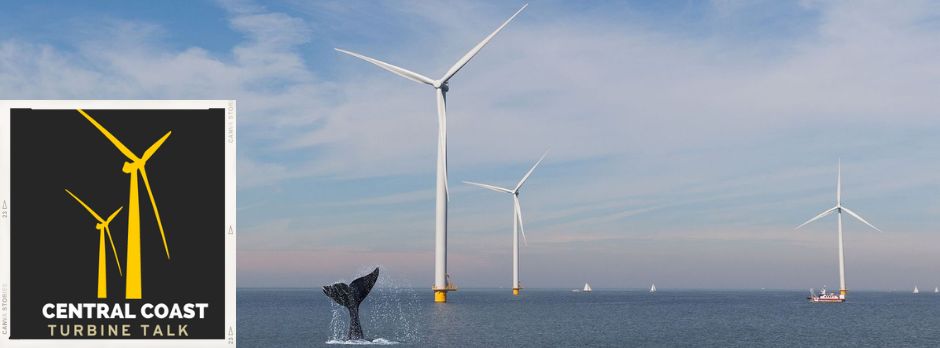
And if any of the politicians and corporations pushing the windfarm agenda are in any doubt as to the depth of affection in which the whales are held, perhaps they should check out
Shellharbour Whale & Wildlife Sightings

Each year between April and November, Australia’s eastern coastline comes alive with the spectacular acrobatic displays of humpback whales. After a summer of feeding on krill in Antarctic waters, these charismatic animals migrate north to sub-tropical waters where they mate and give birth.
Now, instead of gathering on the beaches and headlands around Port Kembla, all would be whale watchers will be able to see is wind turbines, which will also be visible from the shore.
“Whales live in a soundscape of fear, listening is as important to them as vision is to humans,” says Patrick Miller, a mariner biologist at the University of St. Andrews and a joint author of research on why, when naval ships and other sea vessels use sonar, many whale species flee for their lives; some even stranding themselves on beaches in a desperate attempt to escape.
Scientists now believe loud sounds trigger the same fear response as when the animals hear calls emitted by their most terrifying predators: killer whales.
Hearing unusual or loud human noises, such as sonar, triggers the same defensive reaction, Miller explains. “The whales aren’t confusing sonar with killer whale sounds,” he stresses. The cetaceans flee from sonar “likely because it is loud,” he says. “They perceive it as a general threat, and that triggers their decision to escape.”
In time, susceptible cetacean species may learn that they don’t need to flee from sonar, but “they don’t have time to evolve,” Miller says. “All they know is ‘that sonar might eat me.’ And in their race to get away, they end up on a beach.”
And you can bet when the whales start beaching themselves, no one in the Australian government will put up their hand and take responsibility.

As Spectator Australia recorded recently in a piece titled Skyscrapers in the sea: are they killing our whales?
“Offshore wind turbines have a growing list of serious problems undermining their future sustainability, but few things look worse for environmental PR than dead whales.
“A humpback whale carcass recently washed up on the beach at Brigantine near Atlantic City, sparking concern over the preliminary work being done for huge offshore wind farms. It was the seventh inconvenient dead whale in a month around the New Jersey and New York areas. While whales do wash up from time to time, seven in a short period has caused concern.
“What is often forgotten about wind turbines is that they are essentially steel skyscrapers, fitted with blades, and affixed to the ocean floor (which is damaged in the process). These ‘cities’ are encroaching on the ocean and carpeting the shoreline, creating constant noise pollution in a sensitive environment full of creatures that use sound to survive.
“The end result is a matrix of spinning blades on the surface of the water, disrupting air patterns and massacring marine bird life.”
Prediction
The destruction of the migration route of Australia’s whales and the devastating impact of windfarms on real estate values around the nation will destroy the Labor government’s credentials on climate change and come to be seen as a significant breach of public trust.
The next election must be held during or before 2025.
The conservatives, recovering from an historical defeat in 2022, can already scent blood in the water.
As for the public, shivering through another freezing winter, fed up with being gaslighted and about to see their power prices soar by 25%, all of it driven by government policy, they have simply had enough.
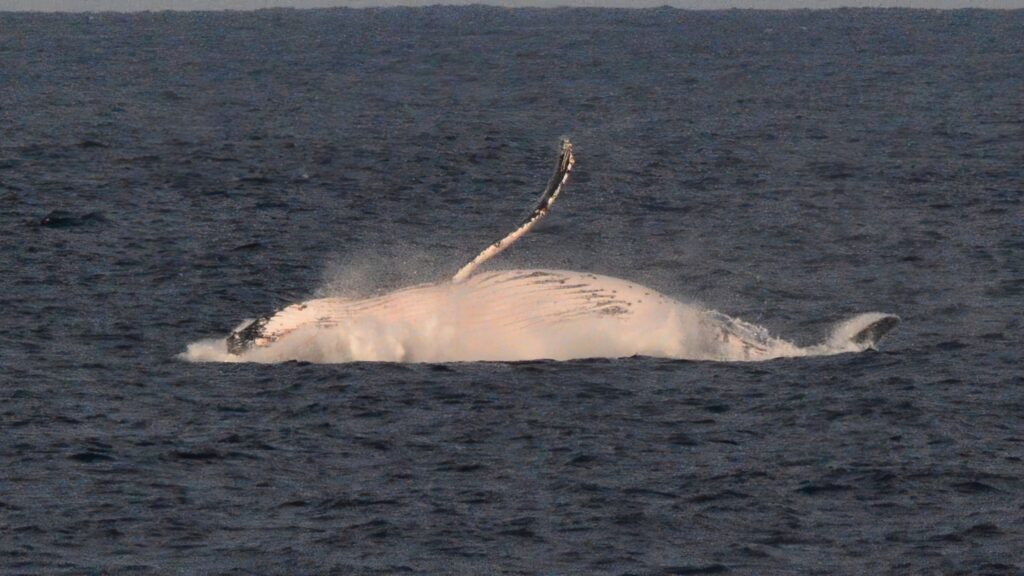
Image by Michael St John


